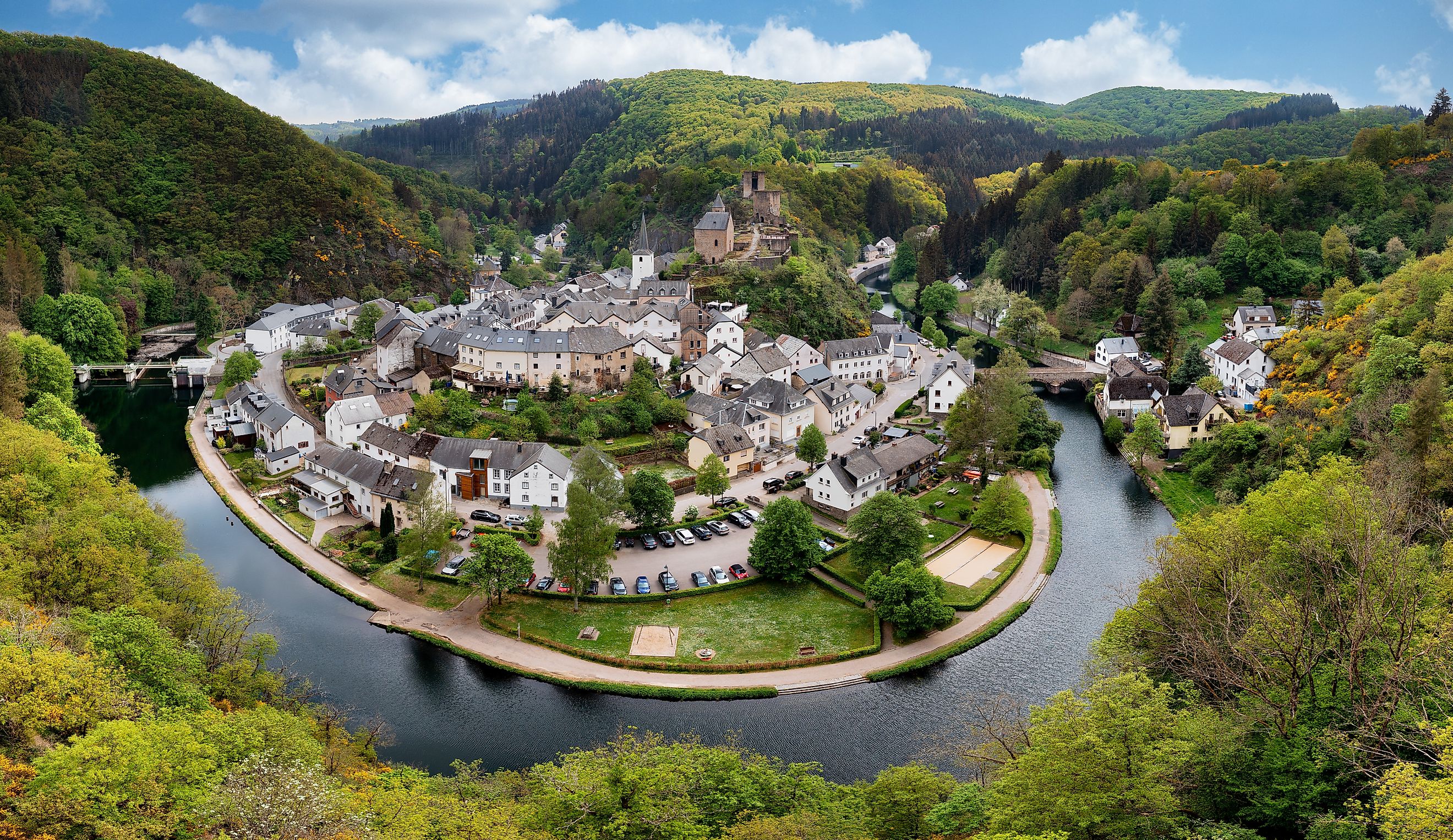
The Richest Landlocked Countries In The World
According to a UN report, landlocked countries are, on average, 20% less developed than their coastal counterparts. Additionally, among the 44 landlocked countries worldwide, 32 are classified as Landlocked Developing Countries, highlighting the significant economic challenges they face. Despite these obstacles, several of these countries have successfully developed industries that do not rely on coastlines or ports. Luxembourg, Switzerland, San Marino, Austria, Andorra, the Czech Republic, Hungary, Slovakia, Kazakhstan, and Serbia are the ten richest landlocked countries, many of which have robust services and manufacturing sectors that contribute to their high GDP figures.
10 Richest Landlocked Countries In The World
| Rank | Country | GDP Per Capita (PPP) |
|---|---|---|
| 1 | Luxembourg | $143,742 |
| 2 | Switzerland | $91,931 |
| 3 | San Marino | $86,989 |
| 4 | Austria | $69,460 |
| 5 | Andorra | $69,146 |
| 6 | Czechia (Czech Republic) | $50,474 |
| 7 | Hungary | $45,691 |
| 8 | Slovakia | $44,080 |
| 9 | Kazakhstan | $34,533 |
| 10 | Serbia | $27,984 |
Luxembourg
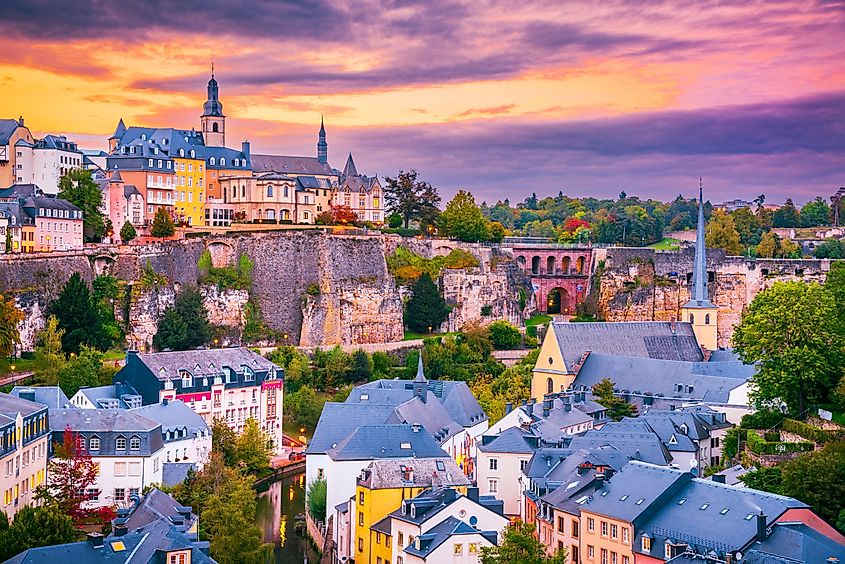
Luxembourg is not only the wealthiest landlocked country but also the richest country globally, with a GDP per capita of $143,742. A lack of water access has not prevented this country from creating a flourishing economy. Due to its centralized position in Europe, it is home to over 130 banking institutions and has a thriving financial services and investments sector. With many people commuting into the country to work, it has effectively attracted talented, multilingual workers, creating a potent workforce in the industry. Luxembourg, known for its favorable tax regime, has also attracted numerous businesses that view it as a 'tax haven,' further stimulating its economy.
Switzerland
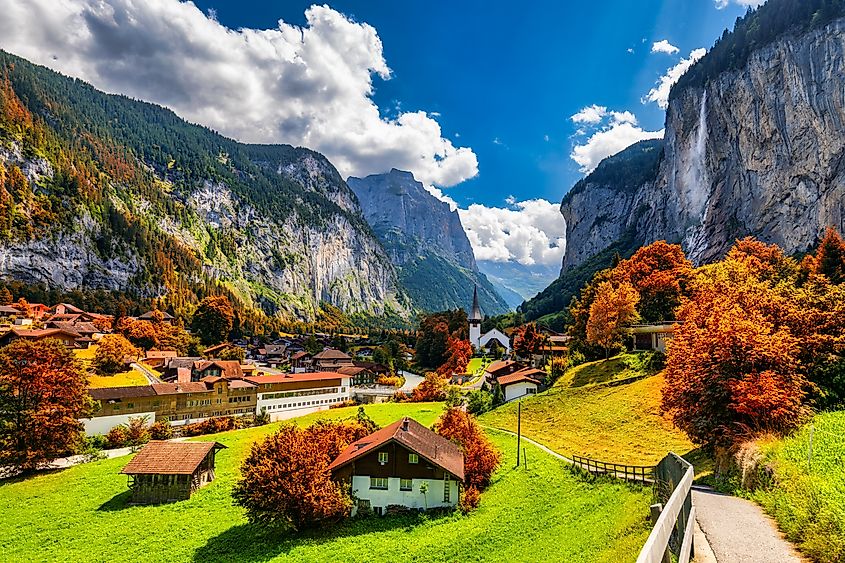
Nestled between France, Italy, Austria, Liechtenstein, and Germany, Switzerland currently has a GDP per capita of $91,931. Its services sector is largely responsible for its impressive economic performance, representing approximately 74% of its GDP. Similar to Luxembourg, Switzerland also has a favorable tax system, attracting many companies and creating a healthy financial hub. Exported products also play a big role in the country’s economy, with over 50% of the country’s export shares being pharmaceutical and chemical products, and 12% being machinery and electronics.
San Marino
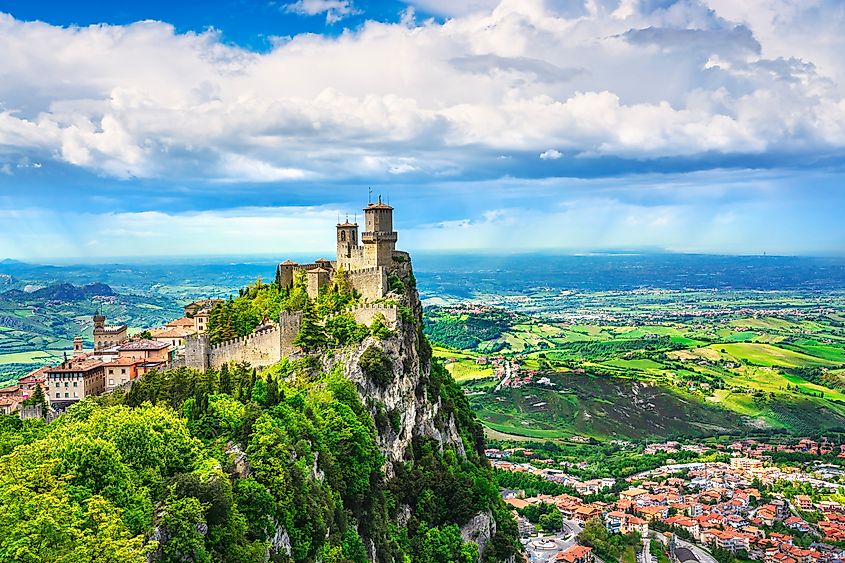
San Marino, a small country spanning just 61.2 km² (23.63 mi²) within Italy, ranks as the third richest landlocked country, boasting a GDP per capita of $86,989. The country’s economy depends heavily on banking, tourism, and manufacturing, and exports a large quantity of clothing, fabrics, ceramics, wine, spirits, paints, and tiles. The manufacturing and financial sectors combined contribute to over half of the country’s GDP. Regarding agriculture, farming activities today mainly focus on cattle, swine, grain, and orchards.
Austria
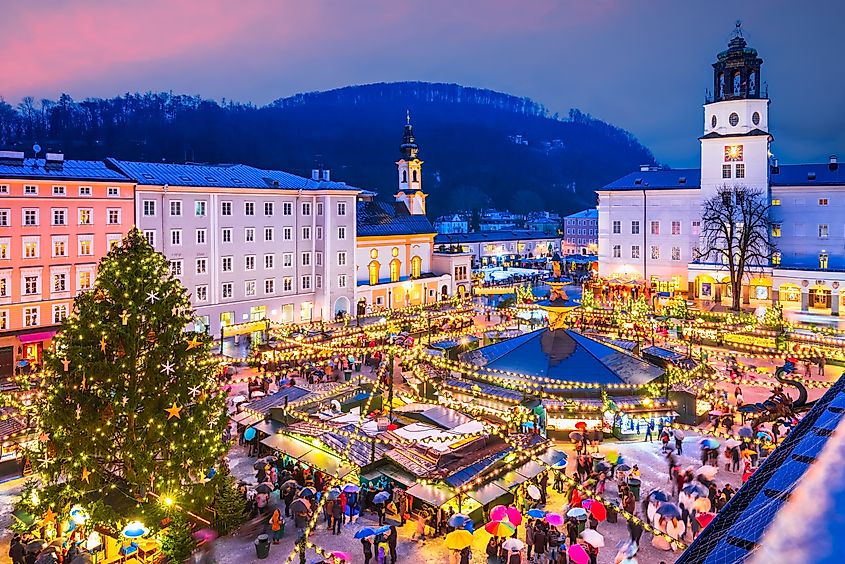
Located in Central Europe and wedged between Italy, Germany, and Hungary, Austria is the fourth wealthiest landlocked country in the world, with a GDP per capita of $69,460. Similar to the three previous wealthiest countries on this list, Austria’s services sector is indispensable, representing over 62% of its GDP and employing 71% of workers. The largest services sectors include sales, hospitality services, and health and education. The manufacturing industry is another key part of Austria’s economy, making up 16% of its GDP. It is abundant in natural resources, including iron ore, minerals, and non-ferrous metals.
Andorra
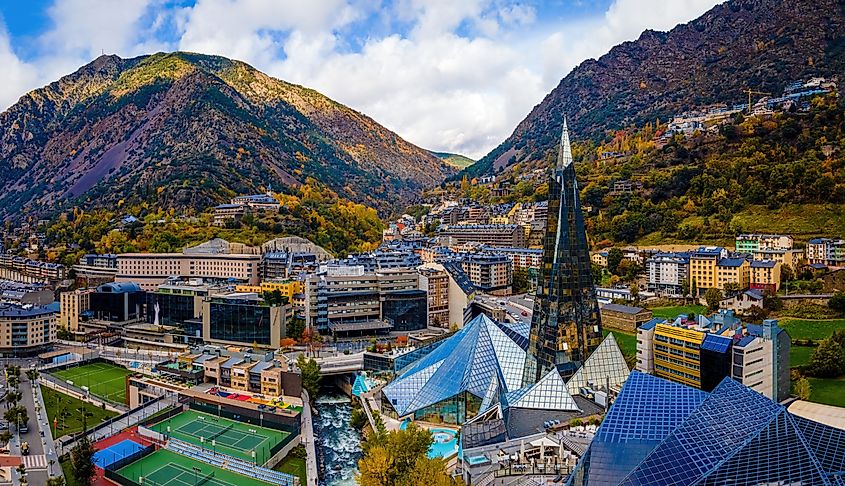
Andorra as a landlocked country ranks just below Austria, boasting a GDP per capita of $69,146. This tiny country, perched in the Pyrenees Mountains between France and Spain, heavily relies on the services sector, which employs approximately 80% of the workforce. Tourism is the largest contributor within the services sector, largely accounting for the country’s income. The banking and financial sector is also a prominent driver of the country’s economy, accounting for more than 20% of its GDP. With only 2% of Andorra’s land being arable, Andorra has developed strong trading ties with its neighbors, Spain and France. It is also actively working to diversify its economy, specifically in the areas of IT, education, and medical services.
Czech Republic
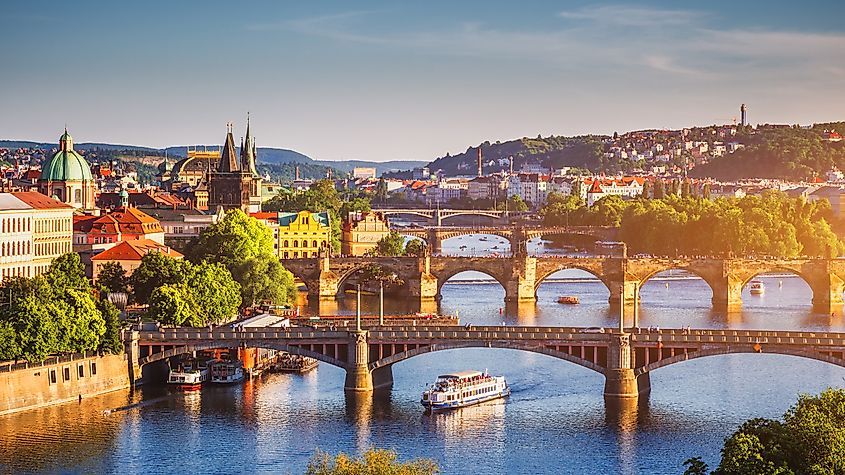
The Czech Republic, located in Central Europe, has a GDP per capita of $50,474, making it the sixth wealthiest landlocked country worldwide. Its economy is an export-oriented, social market economy, with strong roots in the services, manufacturing, and innovation sectors. Specifically, the services sector accounts for 61% of its economy, while the industry sector represents 37%. Key industries include electronics and machine-building, high-tech engineering, steel production, chemicals and pharmaceuticals, and transportation equipment. It also has one of the lowest unemployment rates in the EU, at 2.56% as of 2023.
Hungary
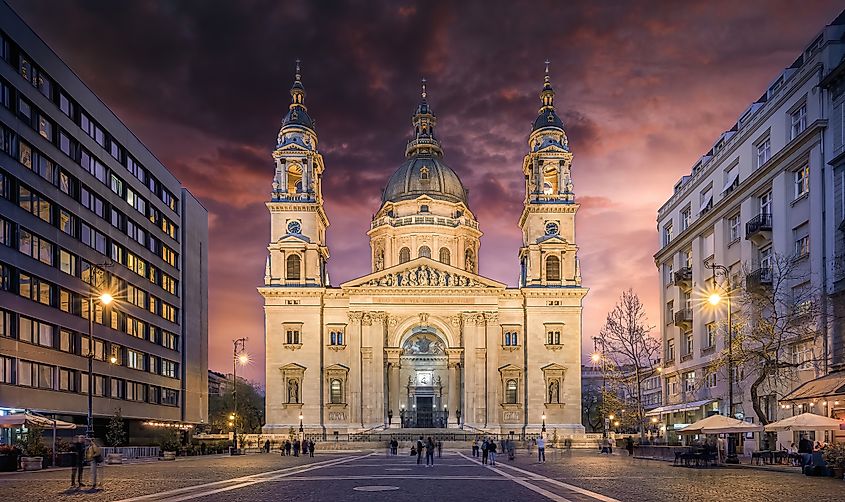
Hungary, a landlocked country in Central Europe, is surrounded by seven neighboring countries and has a GDP per capita of $45,691, ranking it seventh. In the mid-20th century, Hungary transitioned its economy from being primarily agrarian to developing its industrial and services sectors, which also created more job opportunities for women. Today, electronics manufacturing and research are huge drivers of economic growth. Additionally, its economy is very export-oriented greatly emphasizing foreign trade. Some of Hungary’s key trading partners include Germany, Austria, Slovakia, France, and Romania. Food processing, motor vehicles, chemicals, and pharmaceuticals are a few of Hungary’s greatest manufacturing sectors.
Slovakia

Slovakia, nestled between Poland, Ukraine, Hungary, Austria, and the Czech Republic, is the eighth wealthiest landlocked country, generating a GDP per capita of $44,080. Becoming an EU member in 2004 was very advantageous for the country, and its position near important Western European markets with a strong financial services sector has made it an attractive location for foreign direct investment. In terms of manufacturing, Slovakia is the world's largest per capita producer of cars and is home to a successful consumer electronics industry.
Kazakhstan
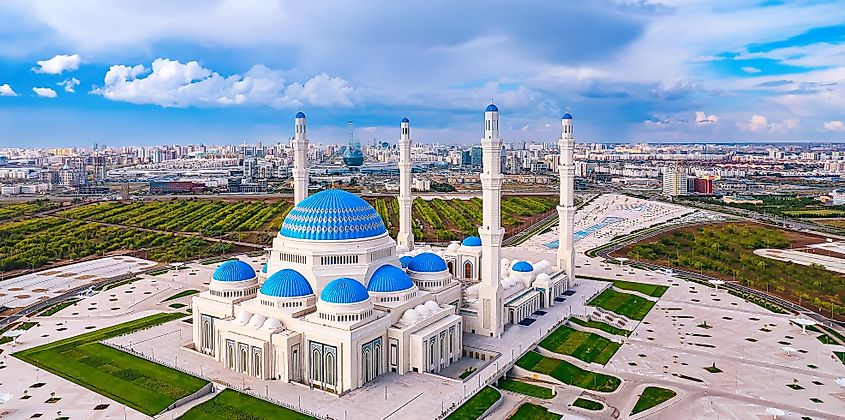
Kazakhstan, the only country on this list located in Asia, has a GDP per capita of $34,533, ranking it ninth. Market-oriented reforms, foreign direct investments, and high amounts of mineral resource extraction have led to impressive growth in Kazakhstan since the 2000s. A boost in oil production in 2023 has also caused an increase in economic growth. Agricultural contributions also represent about 5% of the economy, with steppe lands contributing to the production of both grain and livestock.
Serbia
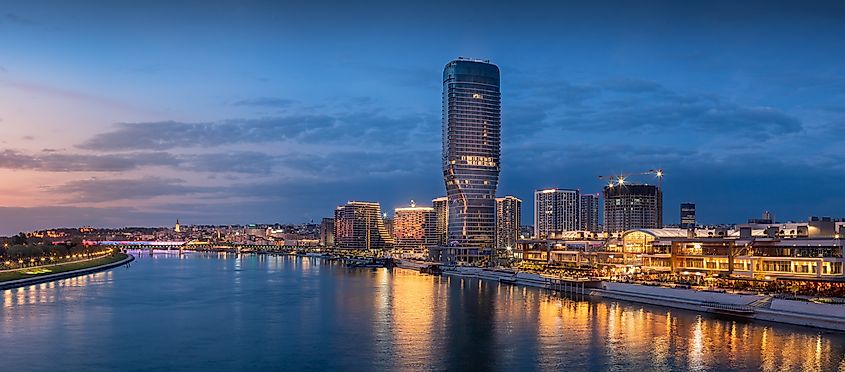
Serbia, located in Europe and bordering eight countries, ranks as the tenth wealthiest country with a GDP per capita of $27,984. Since 2014, it has been in negotiations with the European Union to become a member. The services sector is the most influential part of the country’s economy, representing 52% of its GDP, while industry represents nearly 26%. Its most important exports include electrical equipment and machinery, mechanical tools, plastics, iron and steel, and rubber products. Its current economic policies aim to lower inflation and achieve high and stable growth rates.
Final Thoughts
While landlocked countries often face significant economic challenges, many have successfully developed diverse industries that drive their growth. These ten landlocked countries demonstrate that, despite geographic limitations, strategic economic planning and robust sectors in areas such as services and manufacturing, can lead to remarkable prosperity. As these nations continue to innovate and expand their markets, they serve as important examples of resilience and economic advancement.











